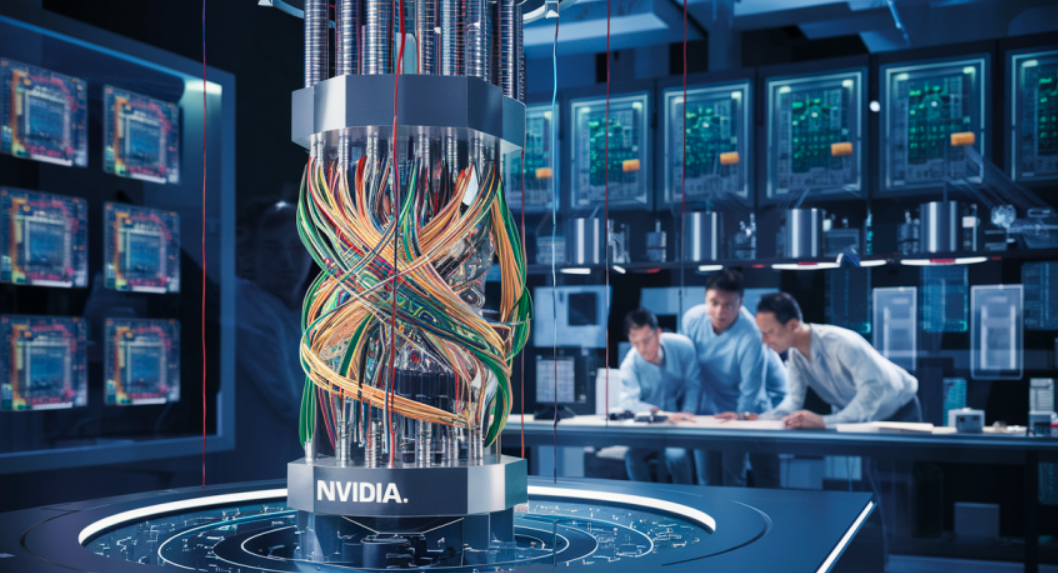Supercomputing Hubs in Germany, Japan, and Poland Harness Grace-Hopper and Quantum-Classical Fusion to Propel Quantum Computing Investigation
At ISC, NVIDIA proclaimed an intensification of quantum computing initiatives at premier supercomputing centers globally via the open-source NVIDIA CUDA-Q™ framework.
Centers of computational excellence in Germany, Japan, and Poland will deploy this framework to energize their NVIDIA-enhanced high-performance computing (HPC) systems’ quantum processing units (QPUs).
QPUs, the cerebral core of quantum machines, employ particle phenomena like electron or photon behavior to perform calculations distinct from traditional processors, promising accelerated computations for specific tasks.
Germany’s Jülich Supercomputing Centre (JSC) at Forschungszentrum Jülich is integrating an IQM Quantum Computers-manufactured QPU to augment its JUPITER supercomputer, fortified by the NVIDIA GH200 Grace Hopper™ Superchip.
Japan’s National Institute of Advanced Industrial Science and Technology (AIST) is home to the ABCI-Q supercomputer, designed to advance Japan’s quantum computing initiative. Leveraging NVIDIA Hopper™ architecture, this system will integrate a QPU from QuEra.
In Poland, the Poznan Supercomputing and Networking Center (PSNC) recently installed two photonic QPUs from ORCA Computing, linked to a new supercomputer partition accelerated by NVIDIA Hopper.
“Functional quantum computing will emerge from the seamless integration of quantum and GPU supercomputing,” stated Tim Costa, NVIDIA’s quantum and HPC director. “NVIDIA’s quantum computing platform equips innovators like AIST, JSC, and PSNC to stretch the frontiers of scientific discovery and advance the art of quantum-integrated supercomputing.”
The QPU in the ABCI-Q will enable AIST researchers to probe quantum applications in AI, energy, and biology, using Rubidium atoms controlled by laser light as qubits. These atoms, akin to those in precision atomic clocks, are identical, promising large-scale, high-fidelity quantum processors.
“Japan’s scientists will edge closer to practical quantum computing applications with the ABCI-Q quantum-classical accelerated supercomputer,” said Masahiro Horibe, deputy director of G-QuAT/AIST. “NVIDIA assists these trailblazers in pushing the boundaries of quantum research.”
PSNC’s QPUs will facilitate explorations in biology, chemistry, and machine learning through two PT-1 quantum photonics systems. These systems employ single photons at telecom frequencies as qubits, enabling a distributed, scalable, and modular quantum architecture using standard telecom components.
“Our partnership with ORCA and NVIDIA has created a unique environment, birthing a novel quantum-classical hybrid system at PSNC,” commented Krzysztof Kurowski, CTO and deputy director of PSNC. “Open, seamless integration and programming of multiple QPUs and GPUs, efficiently managed by user-centric services, are vital for developers and users. This collaboration heralds a new era of quantum-accelerated supercomputers for numerous innovative applications, not tomorrow, but today.”
The QPU in JUPITER will empower JSC researchers to develop quantum applications for chemical simulations and optimization problems, showcasing how classical supercomputers can be turbocharged by quantum computers. Constructed with superconducting qubits, these electronic resonant circuits can be engineered to function as artificial atoms at low temperatures.
“Hybrid quantum-classical accelerated supercomputing is bringing quantum computing closer,” said Kristel Michielsen, head of the quantum information processing group at JSC. “Through our ongoing collaboration with NVIDIA, JSC’s researchers will advance quantum computing, chemistry, and material science fields.”
By intricately integrating quantum computers with supercomputers, CUDA-Q also enables quantum computing with AI to tackle issues like noisy qubits and develop efficient algorithms.
CUDA-Q, an open-source and QPU-agnostic quantum-classical accelerated supercomputing platform, is widely used by companies deploying QPUs and delivers superior performance.
This article was originally published on nvidia. Read the orignal article.
FAQs
Q1: What is the CUDA-Q framework? A1: CUDA-Q is NVIDIA’s open-source platform designed to integrate quantum processing units (QPUs) with classical supercomputers, facilitating the development and execution of quantum algorithms.
Q2: Which countries are currently implementing CUDA-Q? A2: Germany, Japan, and Poland are the key countries where supercomputing centers are integrating CUDA-Q to advance their quantum computing initiatives.
Q3: What are the main challenges in quantum computing? A3: The primary challenges include maintaining qubit coherence, error correction, and scalability of quantum systems.
Q4: How does CUDA-Q benefit scientific research? A4: CUDA-Q enables more efficient and powerful computation by integrating QPUs with traditional supercomputers, facilitating advancements in fields like AI, chemistry, and medicine.
Q5: What is NVIDIA’s vision for the future of quantum computing? A5: NVIDIA aims to accelerate the development and deployment of quantum computing technologies through collaboration between academia, industry, and government, envisioning quantum computing as a cornerstone of scientific and technological progress.
